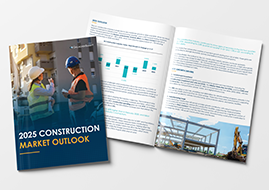
Healthcare professionals dedicate their lives to caring for others, frequently under challenging and stressful circumstances. The nature of the work can be physically and mentally demanding, with constant exposure to situations that are often unpredictable.
A growing trend that's resulted from these factors is a sharp increase in incidents of workplace violence. In fact, healthcare workers are five times more likely to experience workplace violence than employees in other industries and account for 73% of all nonfatal workplace injuries and illnesses that result from violence (US Bureau of Labor Statistics 2020). As hospitals and healthcare facilities become increasingly vulnerable to incidents of aggression and assault, an urgent need to address this issue has emerged.
In the following overview, we address the factors contributing to a rise in workplace violence within the healthcare sector, explore the impact on both staff and patient care, and highlight the critical measures needed to create a safer and more supportive environment. By understanding and tackling this pressing issue, we can help ensure that healthcare organizations can focus on what they do best: providing compassionate and effective care for those in need and protecting their best assets — their people.
From Risk to Resolution
What is driving a rise in violent incidents in healthcare facilities and toward healthcare workers?
High-stress environments: Hospitals are inherently high-stress environments, with patients and their families often experiencing anxiety, fear, and frustration. This stress can lead to aggressive behavior toward healthcare workers.
Mental health and substance abuse: Patients with mental health disorders or those under the influence of drugs or alcohol are more likely to exhibit violent behaviors. Hospitals frequently encounter such patients, increasing the risk of violence.
Long wait times and overcrowding: Overcrowded emergency departments and long wait times can exacerbate patient and family frustration, leading to confrontations and potential violence.
Staffing shortages and burnout: Insufficient staffing levels can lead to longer wait times and reduced patient care, increasing tensions. Additionally, overworked and burned-out staff may have less patience and ability to de-escalate situations.
Lack of security measures: Some hospitals may lack adequate security personnel and infrastructure, making it easier for violent incidents to occur and harder to be managed effectively.
Impact on Healthcare Institutions and Their Employees
Workplace violence within the healthcare industry can have profound impacts on various levels, affecting employees, patients, and the overall functioning of healthcare institutions. A few of these impacts can be seen in the following areas.
Employee wellbeing: Violence — or the ongoing threat of violence — can lead to physical injuries and psychological trauma for workers. This trauma can result in increased stress, anxiety, depression, and burnout, affecting overall wellbeing and job satisfaction.
Additionally, employees who experience workplace violence may file workers' compensation claims for sustained injuries and associated medical costs, lost wages, and rehabilitation. These claims can lead to increased claims costs for healthcare institutions, affecting their overall expenses.
Staff retention and recruitment: High levels of workplace violence can contribute to difficulties in retaining and recruiting staff. Healthcare workers may leave the profession or seek employment in less hazardous environments, leading to staffing shortages and increased recruitment costs.
Patient care and safety: The quality of patient care can be compromised due to workplace violence. Distracted or traumatized staff may be less effective in delivering care, and violent incidents can directly threaten patient safety.
Healthcare institutions may face liability claims if they're found to be negligent in preventing workplace violence or if care delivery is impacted due to employee distraction. Claimants can be patients, visitors, or employees who are harmed due to inadequate security measures or failure to address known risks. Additional claims that may stem from patient care and safety can include disability claims, psychological injury claims, and even wrongful death claims, which families of the deceased pursue in tragic cases in which workplace violence results in fatalities.
Reputation and trust: Incidents of workplace violence can damage the reputations of healthcare institutions, leading to a loss of trust among patients, staff, and the community. Reputational damage can affect patient retention and an institution's ability to attract new patients and employees.
Addressing, Preventing and Resolving Workplace Violence in Healthcare
Creating a safer environment for employees, patients, and visitors relies on a proactive approach to mitigating risk. Some key strategies include:
Conducting risk assessments: Regularly assess the workplace for potential risks and vulnerabilities related to violence. Identify areas or situations in which violence is more likely to occur and develop targeted strategies to mitigate these risks.
Enhancing security measures: Implement security measures, such as surveillance cameras, alarm systems, controlled access points, and security personnel, to deter potential violent incidents and respond quickly when they occur. Collaborate with local law enforcement agencies to facilitate quick responses to incidents and to gain insight into community-specific risks and prevention strategies.
Fostering a supportive environment: Encourage open communication and support employees in reporting concerns or incidents without fear of retaliation. Implement conflict resolutions, de-escalation training, and mediation programs to address interpersonal conflicts before they escalate, and encourage staff to use these resources to resolve disputes constructively.
Seeking expertise from risk management professionals: A risk management consultant can provide valuable assistance in training, developing protocols, and implementing processes to reduce the risk of workplace violence. A risk management consultant conducts thorough evaluations and poses critical questions to uncover potential vulnerabilities. For instance, does your organization engage in serial assessments of the environment? Is your team trained in recognition and de-escalation? Do you have steps and a process in place to secure the environment and keep your team safe in the face of threatening behavior?
Enlisting the help of claims management specialists: Claims management organizations can play a crucial role in addressing issues related to workplace violence by providing a range of services and support for healthcare organizations and affected employees.
- For affected organizations — Efficient claims processing ensures that the process of filing and managing claims is streamlined and that claims are handled promptly and accurately. Efficient processing helps minimize disruptions and financial impacts. Incident investigation can help determine root causes and contributing factors, which can inform future prevention strategies and improve workplace safety. Data analysis and reporting can help identify trends and patterns in incidents, providing valuable insights that can guide policy changes and preventative measures.
- For impacted individuals — Efficient claims processing is crucial when it comes to workers' compensation claims. Proper and prompt processing allows injured workers to receive timely benefits and access to medical care. Claims management organizations can help coordinate with healthcare providers to arrange appropriate medical treatment, including physical therapy, surgery, and other necessary interventions. This care includes associated mental health services and facilitating treatments such as counseling and therapy to support workers' emotional wellbeing.
Proper case management is also important, as it monitors the progress of injured workers, ensuring that they receive comprehensive care and support throughout the recovery process. Claims partners can also develop and implement return-to-work programs that help injured workers transition back to their jobs safely and effectively.
Lastly, communication and support are crucial. Maintaining open communication with injured workers, providing guidance and support throughout the claims process, and addressing any concerns or questions they have offers support and care, removing additional stress.
In conclusion, addressing workplace violence in healthcare is critical in ensuring the safety and wellbeing of both healthcare professionals and patients. By understanding the underlying factors contributing to this issue and implementing comprehensive prevention and resolution strategies, healthcare institutions can create safer and more supportive environments. This proactive approach not only protects staff and reduces financial and reputational risks but also enhances the quality of patient and employee care.
As we continue to navigate the complexities of the healthcare landscape, prioritizing the safety of our healthcare workers is paramount, as is ensuring support and care if incidents do occur. By doing so, we empower healthcare workers to focus on their primary mission: delivering compassionate and effective care to those in need.
Gallagher Bassett understands the complex nature of the healthcare industry and is committed to being a leading claims and risk management partner to hospitals, clinics, senior living and long-term care facilities, and provider practices groups. We take a multidisciplinary risk mitigation approach to working with clients to ultimately lower their total cost of risk, protecting their businesses, employees, and patients.
Author
Make Gallagher Bassett your dependable partner
When making the right decision at the right time is critical to minimize risk for your business, count on Gallagher Bassett's extensive experience and global network to deliver.


